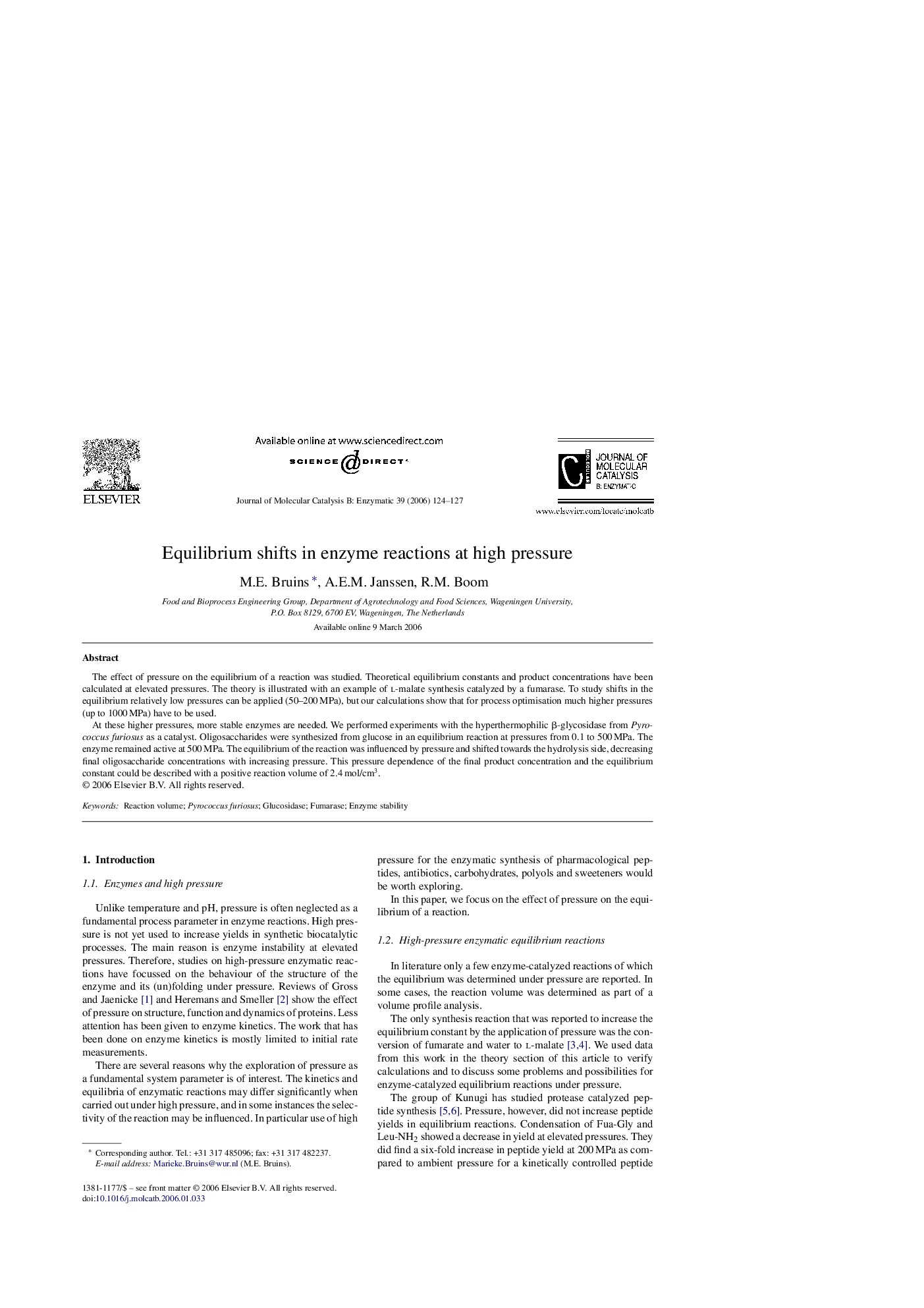| Article ID | Journal | Published Year | Pages | File Type |
|---|---|---|---|---|
| 71230 | Journal of Molecular Catalysis B: Enzymatic | 2006 | 4 Pages |
The effect of pressure on the equilibrium of a reaction was studied. Theoretical equilibrium constants and product concentrations have been calculated at elevated pressures. The theory is illustrated with an example of l-malate synthesis catalyzed by a fumarase. To study shifts in the equilibrium relatively low pressures can be applied (50–200 MPa), but our calculations show that for process optimisation much higher pressures (up to 1000 MPa) have to be used.At these higher pressures, more stable enzymes are needed. We performed experiments with the hyperthermophilic β-glycosidase from Pyrococcus furiosus as a catalyst. Oligosaccharides were synthesized from glucose in an equilibrium reaction at pressures from 0.1 to 500 MPa. The enzyme remained active at 500 MPa. The equilibrium of the reaction was influenced by pressure and shifted towards the hydrolysis side, decreasing final oligosaccharide concentrations with increasing pressure. This pressure dependence of the final product concentration and the equilibrium constant could be described with a positive reaction volume of 2.4 mol/cm3.
